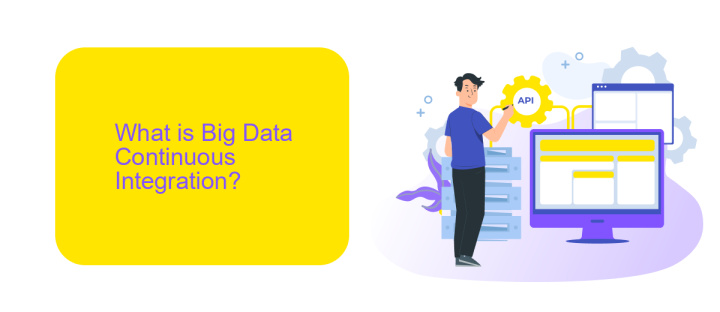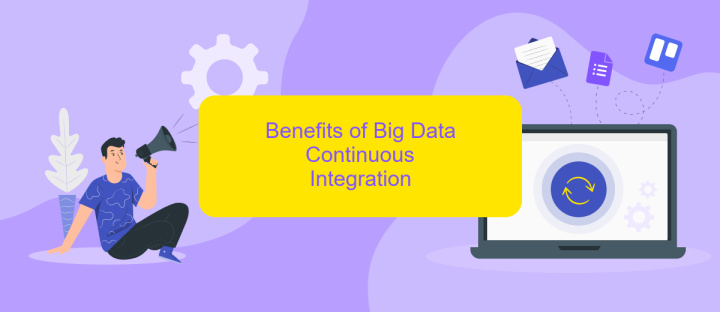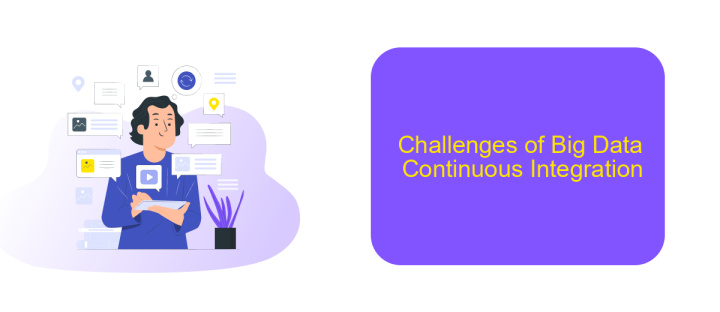Big Data Continuous Integration
In today's data-driven world, Big Data Continuous Integration (CI) is becoming essential for organizations striving to harness the full potential of their data. By seamlessly integrating and automating data workflows, Big Data CI enhances efficiency, reduces errors, and accelerates the deployment of data-driven applications. This article explores the key concepts, benefits, and best practices of implementing Big Data Continuous Integration in modern enterprises.
Introduction
Big Data Continuous Integration (CI) is a pivotal practice in modern software development, enabling teams to integrate and validate changes to their projects efficiently. By automating the integration process, organizations can ensure that their big data applications are always up-to-date and functioning correctly. This practice is essential for maintaining the integrity and performance of big data systems, which often involve complex and large-scale datasets.
- Automated testing and validation
- Efficient code integration
- Continuous deployment
- Enhanced collaboration among development teams
One of the tools that facilitate seamless integration processes is ApiX-Drive. This service allows developers to automate data flows between various applications and services, ensuring that data is consistently and accurately integrated. By leveraging tools like ApiX-Drive, teams can streamline their CI workflows, reduce manual errors, and enhance overall productivity. The result is a more robust and reliable big data application that can adapt quickly to changes and new requirements.
What is Big Data Continuous Integration?

Big Data Continuous Integration (BDCI) refers to the practice of automating the integration and testing of large-scale data systems to ensure they function seamlessly together. This approach allows for the continuous merging of code changes from multiple contributors, facilitating the early detection of issues and enhancing the overall quality of the data infrastructure. By leveraging automated testing and integration tools, BDCI helps organizations manage and process vast amounts of data more efficiently, leading to more reliable and scalable data solutions.
One of the key components of BDCI is the use of specialized services and tools that streamline the integration process. For example, ApiX-Drive offers a robust platform for automating data flows between various applications and systems. By utilizing such services, teams can reduce manual intervention, minimize errors, and accelerate the deployment of new features. This not only improves productivity but also ensures that the data ecosystem remains up-to-date and responsive to changing business needs.
Benefits of Big Data Continuous Integration

Big Data Continuous Integration (CI) offers numerous advantages, enhancing the efficiency and reliability of data-driven projects. By automating the integration process, teams can ensure that code changes are continuously tested and validated, leading to faster development cycles and more robust applications.
- Improved Code Quality: Continuous testing and validation help in identifying and resolving issues early, ensuring high-quality code.
- Faster Time-to-Market: Automated processes reduce the time required for manual testing and integration, accelerating the deployment of new features.
- Scalability: CI systems can handle large volumes of data and complex workflows, making it easier to scale applications as needed.
- Enhanced Collaboration: Tools like ApiX-Drive facilitate seamless integration between various data sources and applications, promoting better teamwork and communication.
Incorporating Big Data CI into your development workflow not only streamlines processes but also mitigates risks associated with data integration. By leveraging services like ApiX-Drive, teams can automate and optimize their data pipelines, ensuring that their applications remain agile and responsive to changing business needs.
Challenges of Big Data Continuous Integration

Implementing Continuous Integration (CI) in Big Data environments presents unique challenges that can complicate the development process. The sheer volume, variety, and velocity of data require robust systems capable of handling these complexities while ensuring seamless integration.
One of the primary challenges is managing the diverse data sources and formats. Big Data systems often need to integrate data from structured databases, unstructured text, and real-time streams. This diversity necessitates sophisticated data transformation and normalization processes. Additionally, ensuring data quality and consistency across these varied sources is a significant hurdle.
- Scalability: Handling large-scale data processing and storage needs efficiently.
- Data Quality: Ensuring accuracy, completeness, and consistency of data.
- Integration Complexity: Managing diverse data sources and formats.
- Performance: Maintaining system performance under heavy data loads.
Tools like ApiX-Drive can facilitate the integration process by automating data workflows and connecting various data sources seamlessly. By leveraging such services, organizations can overcome some of the integration complexities, ensuring a more streamlined and efficient CI pipeline for Big Data projects.
Conclusion
In conclusion, the integration of Big Data with Continuous Integration (CI) practices offers a transformative approach to managing and analyzing vast datasets efficiently. The seamless integration of these two domains ensures that data pipelines are continuously tested and deployed, minimizing errors and maximizing productivity. By leveraging automated tools and platforms, organizations can streamline their data workflows, leading to faster insights and more informed decision-making processes.
One such tool that facilitates this integration is ApiX-Drive, which allows for the automation of data transfers between various applications and services. By utilizing ApiX-Drive, businesses can set up complex integrations without the need for extensive coding knowledge, thus simplifying the process of continuous data integration. This enhances the overall agility and responsiveness of data-driven projects, ensuring that they remain adaptable and scalable in the face of ever-evolving technological landscapes.
FAQ
What is Big Data Continuous Integration?
Why is Continuous Integration important for Big Data projects?
How can I automate data integration in Big Data projects?
What are the challenges of implementing Continuous Integration in Big Data?
How can ApiX-Drive help with Big Data Continuous Integration?
Apix-Drive will help optimize business processes, save you from a lot of routine tasks and unnecessary costs for automation, attracting additional specialists. Try setting up a free test connection with ApiX-Drive and see for yourself. Now you have to think about where to invest the freed time and money!

